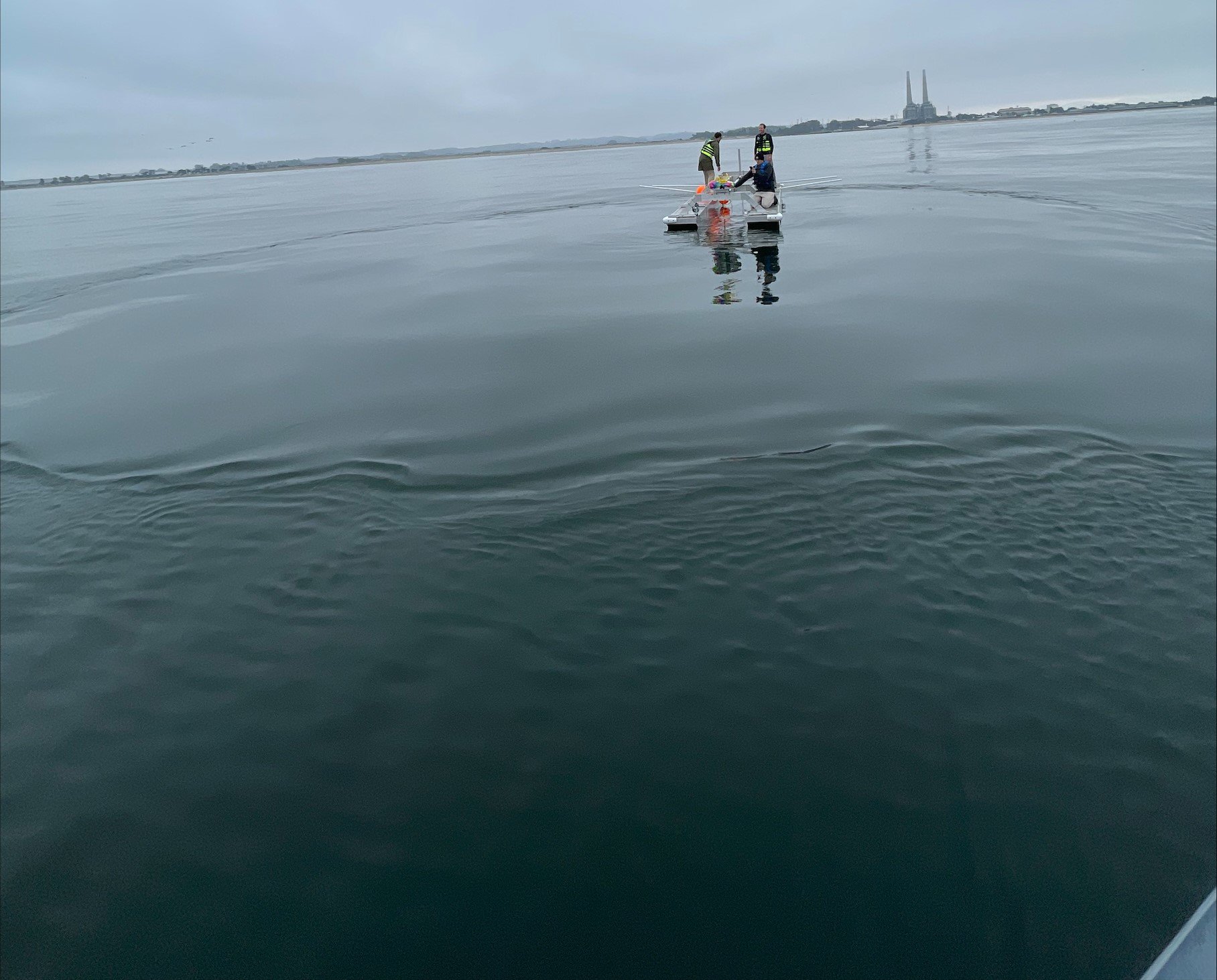Under the ARPA-e MARINER program, and in partnership with Trophic and UNH, Otherlab has been developing technologies to help enable seaweed farming at terrestrial farming scales. These include an underwater robot (ROV) for directly installing low-cost helical anchors that can extend seaweed farming into unprotected waters and a combined wave and solar powered upwelling device that brings deep, cool, nutrient rich water to the surface where it can dramatically increase yield. Seaweed farming has direct access to an effectively unlimited resource of nitrates and can produce yields an order of magnitude greater than terrestrial farming, especially for protein. Seaweed farms can replace large areas of farmland, allowing for its return to nature, while generally improving the ocean ecosystem and acting as a nursery for many fish species. It is a high impact solution for mitigating climate change, recovering natural ecosystems, and feeding the world.
ROV Anchoring
For seaweed farming to scale like terrestrial farming, seaweed farms need to be large scale, which means they must be located offshore where they are exposed to large waves, potentially as high as 15 meters or more. One of the primary challenges to achieving this is the availability of low-cost anchoring. Helical or screw anchors can carry loads in excess of 100 times their weight, can resist vertical loads, and have low impact on the seabed environment. Otherlab is developing an all electric ROV helical anchor installation system where the ROV carries the helical anchor precisely to the desired location before spinning on its axis and driving the helical anchor into the seabed. It avoids the need for hydraulic motors, temporary torque reaction mitigation anchoring systems, and divers. It functions similarly to a large electric screwdriver and allows small vessels to install large anchors, enabling a near 10x cost reduction over traditional anchoring systems. This technology is expected to have application outside of seaweed farming, including aquaculture in general, boat mooring, autonomous anchoring systems, and offshore wind power.
Upweller
Surface waters are low in nitrates, especially during the summer, but below the photosynthetic zone nitrate levels quickly increase. By bringing deeper cooler nutrient rich water to the surface yield can be greatly increased. Otherlab is developing an upweller technology that uses wave and solar energy to drive a large suspended hydrofoil rotor that pumps deeper water to the surface. It looks like an inverted ceiling fan and each wave that passes lifts the surface buoy up and down, pumping the hydrofoil blades that flap like a bird's wings and drive the rotor around. Being large in diameter the upweller is capable of high flow rates, and at low capital cost. Depending on available wave energy, nutrient profile, and pycnocline, nitrate delivery at the equivalent of $10 to $100 per ton is achievable. This technology allows for year round growth of seaweeds, with cool nutrient rich waters brought to the surface during the summer months when growth normally stops. Yield can be dramatically increased and made more consistent.
Beyond seaweed farming this technology might be used for environmental protection and rehabilitation, including regeneration of natural kelp forests, protection of coral reefs from warming events, revitalization of local fish stocks via increased phytoplankton production, and general protection from climate change. The cooling energy of the upwelling device can be 100,000 times the pumping energy. That is, a 10 kW upweller device 15 meters in diameter might bring 1 GW of cooling water to the surface.
Testing of a 7.5 meter diameter upweller showed surface upwelling in flat water using tip thrusters. 1,300 Newtons of total rotor thrust was measured via tether tension corresponding to an approximately 5 cubic meter per second flow rate. Further refinements are needed to increase the depth from which this surface upwelling can be produced. The rotor also rotates under wave power alone with measured peak tether tensions as high as 5,500 Newtons in approximately one meter waves. Both thruster and wave power can operate concurrently. In time the thrusters will be powered by solar modules on the upweller float. Upweller refinement and the gradual expansion of testing into higher energy waves is ongoing.




